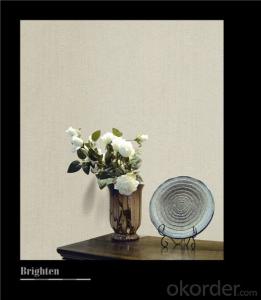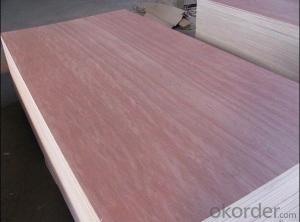3/8 Thick Aluminum Plate
3/8 Thick Aluminum Plate Related Searches
Led Light Bulbs For Ceiling Fixtures Led Lamps For Ceiling 42 In Ceiling Fan With Light Aluminum Coil Stock For Gutters Aluminum Foil For The Grill Hole Saw For Aluminum Plate Aluminum Tread Plate For Trailer Bow Plate For Aluminum Boat Aluminum Foil For Grow Room Aluminum Foil For Joint PainHot Searches
Stock Price For Aluminum Aluminum Coil Stock For Sale Aluminum Gutter Coil For Sale Used Aluminum Scaffolding For Sale 1/4 Aluminum Plate For Sale Aluminum Bar Stock For Sale Aluminum Round Stock For Sale Aluminum Diamond Plate For Sale Aluminum Scaffolding For Sale Craigslist 6061 Aluminum Plate For Sale Aluminum Dock Plate For Sale 7075 Aluminum Plate For Sale Aluminum Tread Plate For Sale Aluminum Checker Plate For Sale Aluminum Plate For Sale Near Me Plate Aluminum For Sale Aluminum Plate For Sale Aluminum Square Stock For Sale Aluminum Flat Stock For Sale Billet Aluminum Stock For Sale3/8 Thick Aluminum Plate Supplier & Manufacturer from China
Okorder.com is a professional 3/8 Thick Aluminum Plate supplier & manufacturer, offers integrated one-stop services including real-time quoting and online cargo tracking. We are funded by CNBM Group, a Fortune 500 enterprise and the largest 3/8 Thick Aluminum Plate firm in China.Hot Products
FAQ
- Anodized aluminum sheets are highly desirable for a variety of applications due to their distinct properties. Firstly, they possess a protective oxide layer on their surface, which enhances their resistance to corrosion. This layer is formed through an electrochemical process called anodization, wherein the aluminum sheet is treated with an electric current in an acid electrolyte solution. Consequently, anodized aluminum sheets become more durable and capable of withstanding harsh environments, making them suitable for outdoor use. Another notable property of anodized aluminum sheets is their improved scratch resistance. Through the anodization process, not only is a protective layer created, but the surface of the aluminum also becomes hardened, rendering it more resistant to scratches and wear. This property proves particularly advantageous in applications where frequent handling or abrasive conditions are involved. Moreover, anodized aluminum sheets can be manufactured in a wide range of colors. The anodization process enables the integration of dyes or pigments into the oxide layer, resulting in an array of vibrant color options. This aspect makes anodized aluminum sheets highly popular in architectural and decorative applications, as they can be customized to meet specific design requirements. Additionally, anodized aluminum sheets possess excellent thermal and electrical conductivity. The process of anodization does not significantly impact these inherent properties of aluminum. Consequently, anodized aluminum sheets can efficiently dissipate heat and conduct electricity, making them well-suited for applications such as heat sinks, electronic enclosures, and electrical components. To sum up, anodized aluminum sheets possess enhanced corrosion resistance, improved scratch resistance, a wide range of color options, and excellent thermal and electrical conductivity. These properties render anodized aluminum sheets a versatile and durable material for various industries and applications.
- Indeed, aluminum sheets prove to be a fitting option for marine applications. Owing to its exceptional resistance to corrosion and durability in marine settings, aluminum emerges as a widely employed material in the maritime sector. Notably, its lightweight yet robust nature renders it an ideal selection for diverse purposes, encompassing boat construction, ship hulls, decks, and other marine structures. Moreover, aluminum boasts a commendable strength-to-weight ratio, thereby enhancing fuel efficiency and reducing operational expenses. Its capacity to endure the harsh conditions of saltwater, coupled with its minimal maintenance requirements, further solidifies its popularity in marine applications. All in all, aluminum sheets serve as a dependable and efficient material for employment in the marine industry.
- Yes, aluminum sheet can be used for heat exchangers. Aluminum is a commonly used material for heat exchangers due to its excellent thermal conductivity, light weight, and corrosion resistance. The high thermal conductivity of aluminum allows for efficient transfer of heat between fluids, making it suitable for various heat exchange applications. Additionally, aluminum is available in different alloys and thicknesses, providing flexibility in design and customization for specific heat exchanger requirements. Overall, aluminum sheet is a popular choice for heat exchangers in industries such as automotive, HVAC, and aerospace.
- Construction can indeed utilize aluminum sheets. Aluminum, a versatile and lightweight material, possesses numerous advantageous properties for construction purposes. Its corrosion resistance allows for both indoor and outdoor applications. Moreover, aluminum sheets exhibit a high strength-to-weight ratio, granting them durability and strength while remaining relatively lightweight. This characteristic proves advantageous in construction projects where weight is a consideration. Furthermore, aluminum is non-toxic and highly recyclable, making it an environmentally conscious option. When combined with its aesthetic appeal and ease of fabrication, aluminum sheets become a favored choice for a variety of construction applications such as roofing, cladding, wall panels, window frames, and more.
- Yes, 101 aluminum sheets are suitable for food packaging. Aluminum is widely used in the food packaging industry due to its excellent properties. It is lightweight, durable, and resistant to corrosion, making it an ideal material for preserving the freshness and quality of food products. Additionally, aluminum is a good barrier against light, moisture, and oxygen, which helps to extend the shelf life of packaged food items. Therefore, 101 aluminum sheets are a suitable choice for food packaging applications.
- Cooks are warned not to use aluminum cookware when preparing acidic foods. Why?
- Plain okorder /... Hope this helps.
- Can someone please help me with the resonance structure for AlCl3. When I draw it, the central Al does not have a complete octet. I read that this is usually the case for atoms like Boron and Aluminium who only have three valence electrons. Is this correct? Also, as a follow on question, does AlCl3 display resonance?
- I'll do NO2- as an example. The Lewis structure is O=N-O with two electron pairs on the left O and 3 electron pairs on the right O and one electron pair on the N. But you could also draw it as O-N=O. So, those are the two resonance structures. The actual is where N has 1.5 bonds to each O on average.
- Painted aluminum sheets come in various finishes, each with its own distinct features and advantages. 1. For a non-reflective and dull appearance, the matte finish is ideal. This option is commonly utilized in architectural elements and interior design for a low-gloss look. 2. If you prefer a shiny and reflective surface, the gloss finish is the way to go. This finish is often chosen for automotive parts and decorative panels, giving them a sleek and polished appearance. 3. To add texture and patterns to the painted aluminum sheet, opt for a textured finish. This type of finish is commonly used for decorative purposes, enhancing visual appeal and providing a unique tactile experience. 4. Achieve a metallic appearance resembling stainless steel or bronze with a metallic finish. This finish is frequently used in architectural applications to achieve a modern and high-end aesthetic. 5. Powder coating is a popular finishing method where a dry powder is applied to the painted aluminum sheet and cured under heat. This process creates a durable and seamless finish that is resistant to chipping, scratching, and fading. 6. Protect and enhance the durability of a painted aluminum sheet with a clear coat finish. This transparent finish provides an extra layer of protection against UV rays, moisture, and other environmental factors. Consider the intended use and desired aesthetic when selecting a finish for painted aluminum sheets, as each type offers its own unique benefits and characteristics.














































